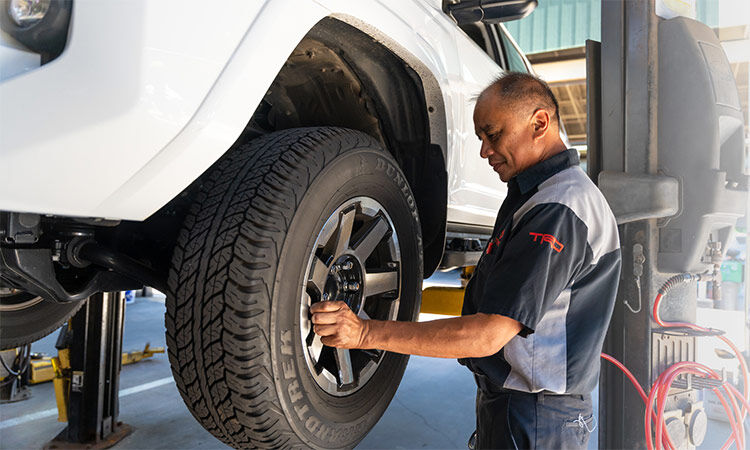Morris Tire Service: Comprehensive Tire Maintenance
Morris Tire Service: Comprehensive Tire Maintenance
Blog Article
Tire Repair Work Myths Debunked: Dividing Truth From Fiction
In the world of automotive maintenance, tire repair work holds a substantial area, yet it is often shrouded in misconceptions and misconceptions that can result in confusion for automobile owners. Understanding the difference between fact and fiction when it concerns tire repair work is important for making sure both safety and security and cost-effectiveness. From the false impressions bordering patching versus connecting a pierced tire to the efficiency of numerous tire sealers, there are several key locations where quality is required to make educated decisions. Let's clarify some usual tire fixing misconceptions and separate them from the reality to empower you with the expertise required to navigate this vital aspect of vehicle upkeep.
Common Tire Repair Misconceptions
Resolving common misconceptions bordering tire repair work is essential for keeping roadway security and expanding the longevity of your lorry's tires. One typical misconception is the belief that a pierced tire is beyond fixing and should be changed completely. Actually, numerous slits can be efficiently fixed by a professional, adhering to industry requirements. It is vital to comprehend that not all slits are produced equivalent; while some may undoubtedly require a tire substitute, the bulk can be safely repaired.
One more false impression is the idea that a do it yourself tire repair service kit is an enough option for all tire issues. While these sets can be useful for momentary fixes in emergency situations, they are not a permanent remedy and might not resolve the underlying problem (morris tire). Seeking the expertise of a qualified tire specialist is always recommended to ensure the safety and integrity of the tire

Can You Fix a Punctured Tire?
Repairing a pierced tire is an usual practice in the automobile industry, typically brought out by expert specialists complying with details standards and criteria. Slits situated on the walk area of the tire are typically repairable as long as they are within a certain size limit and do not affect the tire's architectural honesty.
It is very important to keep in mind that penetrates near the sidewall or shoulder of the tire are generally not repairable as a result of security issues. Such areas Full Report undergo significant stress and flexing, making repairs unstable and possibly harmful. Additionally, if the leak is as well large, exceeding the advised repairable dimension, or if the tire reveals indicators of inner damages, it is safer to change the tire entirely.
The Reality Regarding Patching Vs. Plugging
When thinking about the fixing of a punctured tire, recognizing the differences in between patching and plugging is important for making notified choices pertaining to tire maintenance and safety. Patching includes fixing the tire from the within, where a spot is used to cover the slit.
Misconception: All Tire Sealers Are Effective

When picking a tire sealant, take into consideration aspects such as the dimension of leaks it can effectively fix, compatibility with tire stress tracking systems (TPMS), and whether it is secure for the tire material. Reviewing reviews and looking for recommendations from experts can help you make a notified decision. Furthermore, normal maintenance and prompt substitute of sealant can aid guarantee optimum performance. Keep in mind, while tire sealants can be useful in emergencies, they are not a replacement for correct tire care and maintenance.
Ideal Practices for Handling Flat Tires
Taking into account the varying efficiency of tire sealants, understanding finest methods for managing level tires is essential for preserving roadway safety and security and vehicle performance. When coming across a puncture, the initial action is to securely pull over to the side of the road, away from oncoming web traffic. Transform on threat lights to alert other chauffeurs of your circumstance. It is suggested to use the hand brake and location wheel click to find out more wedges under find here the tires to stop the lorry from rolling. Next off, consult your lorry's manual to locate the spare tire, jack, and lug wrench. Before attempting to change the tire, ensure that the location is level and steady. Loosen the lug nuts, increase the car with the jack, remove the lug nuts and blowout, and change it with the extra tire. Tighten up the lug nuts in a star pattern, lower the vehicle, and firmly tighten up the lug nuts. Store away the level tire, tools, and tools, and keep in mind to inspect the spare tire's stress occasionally. Complying with these best techniques can assist you manage flat tires effectively and securely.
Verdict
In final thought, it is necessary to different fact from fiction when it comes to tire repair service myths. Recognizing the reality concerning patching vs. connecting, the efficiency of tire sealants, and ideal methods for taking care of blowouts can aid guarantee the safety and security and longevity of your tires. By unmasking typical misconceptions and complying with correct repair guidelines, you can make enlightened decisions when it concerns preserving the wellness of your vehicle's tires.
Report this page